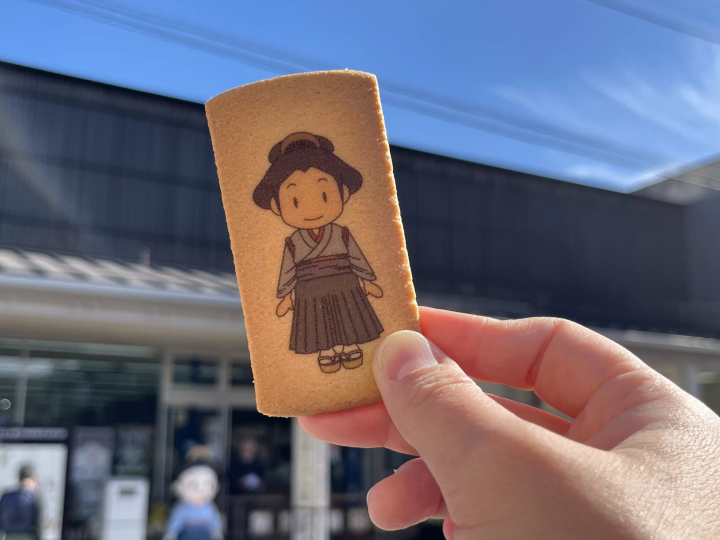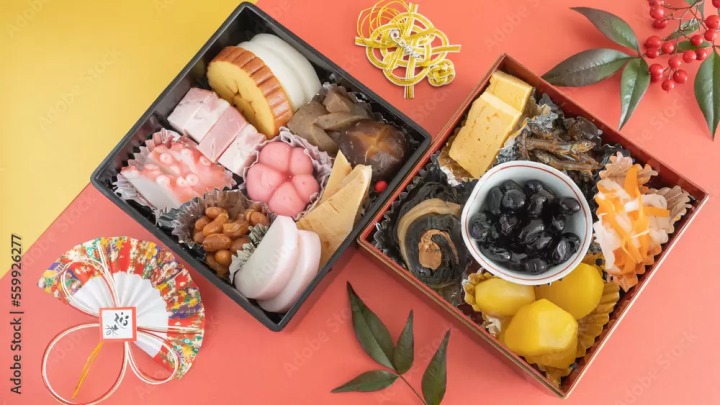Japan's Silk Industry: A Journey Through Historic Sites Near Tokyo

The Tomioka Silk Mill was listed as a World Heritage Site in 2014. A handful of historic sites dot the Jobu Silk Road running through Gunma and Saitama Prefectures. This article features the Tomioka Silk Mill and other places deeply connected to the history of Japan's silk industry.
A Journey Through the History of Japan's Silk Industry
There are many historic sites linked to Japan's silk industry across Gunma and Saitama Prefectures. The most famous is the Tomioka Silk Mill, which was designated a World Heritage Site.
This article introduces the historical heritage and culture surrounding the region's silk industry, featuring places and facilities where visitors can learn more about Japan's Silk Road.
The History of Japan's Silk Industry

Photo by Pixta
Silk textiles are said to have originated in China about 5,000 years ago. Silk was later introduced to European aristocrats as it traveled across the Silk Road.
When Japanese ports opened to trade with Western countries in the Meiji Era, raw silk became a valuable export.
The Tomioka Silk Mill was built around this time to mass-produce high-quality silk. This natural fiber became the backbone of the Japanese economy, accounting for up to 80 percent of Japan's total exports.
In fact, Japan's silkworm rearing and reeling techniques have greatly influenced the world's silk industry.
Jobu Silk Road: Visit Historic Sites of the Silk Industry
Gunma and Saitama Prefecture were formerly known as Joshu and Bushu Province, respectively. During the Meiji Era, these provinces prospered under the silk industry.
In particular, seven areas in Gunma and Saitama collectively known as the Jobu Silk Road still retain their rich history of silk production.
Those who wish to witness the legacy of the once-prosperous silk industry should take a trip along Japan's Silk Road!
Tomioka Silk Mill: A World Heritage Site With a 150-Year History

Photo by Pixta
The Tomioka Silk Mill was built in 1872 using the latest technology of those times from around the globe.
The mill became a World Heritage Site in 2014 due to its historical significance and construction. The site was home to a 140-meter-long silk reeling factory, cocoon warehouse, and dormitory for people who worked at the mill.
Even after 150 years, the site and its facilities have been preserved with minimal wear and tear.

Picture courtesy of Tomioka City
The main attraction is the reeling factory, which was built using timber-framed brick construction. The lack of pillars creates a sense of spaciousness in the central room. An automatic silk reeling machine was also set up here in 1966.
When the mill first opened, there were 300 reeling devices imported here from France.

Picture courtesy of Tomioka City
The West Cocoon Warehouse is a national treasure that opened to the public in 2020 after undergoing repairs. Employing a house-in-house style, the warehouse has been repurposed into a gallery and multipurpose hall.
Arafune Cold Storage in Shimonita: A Natural Refrigerator for Silkworm Eggs

Picture courtesy of Shimonita Town
Traditional silkworm rearing, or sericulture, could only be performed once a year when the eggs hatched. However, once a year was not enough to increase the domestic raw silk production.
The Arafune Cold Storage provided a solution to this production shortage. Built during a time when refrigerators did not exist, this storage facility used cold air to preserve silkworm eggs.
Cold air blew through the storage year-round, which made it possible to control when eggs hatched. Silkworms could now be reared two to three times annually.
Surrounded by lush greenery, the Arafune Cold Storage has been preserved in the same surroundings of its heyday (*Closed in the winter from December to late March).
Tajima Yahei Sericulture Farm in Isesaki: The Origin of Modern Silkworm Rearing

Photo by Pixta
Born into a sericulture household, Yahei Tajima learned the importance of good ventilation for silkworm rearing.
He later built his own breeding facility and developed what became known as the Seiryoiku sericulture method.
Today, the Tajima Yahei Sericulture Farm gives visitors a view of what the facility was like. Like the Tomioka Silk Mill, it is a registered World Heritage Site.
Since it is a private residence, only the garden and mulberry farm are open to the public. The Jodan-no-Ma room on the first floor is open every third Sunday of the month. Check the official website (Japanese) for more details.
Takayamasha Sericulture School in Fujioka: Training Japan's Top Silkworm Breeders

Picture courtesy of Fujioka City
Founded in 1884, the Takayamasha Sericulture School was founded as a research and educational institute for the silkworm industry.
Its president, Chogoro Takayama, researched the best ways to breed silkworms and developed the Seion'iku method.
This sericulture method combined Tajima's Seiryoiku method, which focused on efficient ventilation, and the Ondan'iku method, which emphasized warming the breeding facility.
Chogoro welcomed new students and greatly contributed to the sericultural industry. The school also generously covered students' cost of education and living. This enabled those from poor farms the opportunity to learn about silkworm breeding.

Photo by Pixta
The Takayamasha Sericulture School is another World Heritage Site that preserves various breeding facilities. We recommend taking a guided tour of the facility!
Kyoshinsha Mohan Sanshitsu in Honjo: An Innovative Sericulture Farm

Photo by Pixta
Kuzo Kimura, the younger brother of Chogoro, was also a major figure in the sericulture industry.
Kuzo developed the Ippa Ondan'iku method, which uses charcoal fire to remove humidity from the silkworm-rearing chambers and prevent diseases.
In order to implement this innovative method, Kuzo built the Kyoshinsha Mohan Sanshitsu, a special room for breeding silkworms.

Ceiling of Kyoshinsha Mohan Sanshitsu. Photo by Pixta
The roof has four clerestory windows, and intake ducts are built into the floor. Braziers were placed in every room to control the temperature and humidity.
The Kyoshinsha Mohan Sanshitsu is about a 20-minute drive from Takayamasha Sericulture School. We recommend visiting both to compare the differences between these two historical facilities.
Eiichi Shibusawa Memorial Museum in Fukaya: Meet the Shibusawa Android

Picture courtesy of Fukaya City
Known as the father of modern Japanese economics, Eiichi Shibusawa has been garnering attention as the next face on the 10,000 yen bill to be released in 2024.
During his 91 year life, Shibusawa contributed a great deal to modernizing Japan. Among his many legacies is the Tomioka Silk Mill.
Born into an agricultural family in Fukaya City, Shibusawa was very knowledgeable in sericulture. At the age of 30, he headed the construction of the Tomioka Silk Mill.
The Eiichi Shibusawa Memorial Museum displays various documents and images from his lifetime.

Picture courtesy of Fukaya City
One of the main attractions is the Eiichi Shibusawa Android. Unveiled in 2020 on the 180th anniversary of his birth, this lifelike replica of the businessman gives lectures on economics and ethics.
The lectures are 30 minutes long and held eight times a day (Japanese only).
Katakura Silk Commemorative Museum in Kumagaya: Learn How Silk is Made

Picture courtesy of Katakura Industries Co., Ltd.
Once a major industry across Japan, silkworm breeding has become increasingly rare in recent years.
The Katakura Silk Commemorative Museum was established by Katakura Industries, the private owner of the Tomioka Silk Mill. Visitors can view equipment used for silkworm breeding and reeling while learning about the silk production process.

Picture courtesy of Katakura Industries Co., Ltd.
The cocoon warehouse has been converted into an exhibition room, with displays and documents on how the facility once operated.
Visit the museum to deepen your understanding of the silk industry and the lives of those who worked in the factories.
Experience the Legacy of Japan's Silk Industry
We hope you enjoyed learning about the history of Japan's silk industry.
The Jobu Silk Road weaves through historic sites connected with major figures who led this once-thriving industry. We recommend visiting Gunma and Saitama to experience these sites for yourself!
For additional information on shrines, temples, and museums in the area, check out the articles below.
Read also
Written by Kumiko Ishigaki
Sponsored by JOBU KINUNOMICHI
Main image by Pixta
MATCHA's promotional account for corporate and local government advertising. We aim to provide useful information to our readers in an enjoyable manner.




































![[Corporate Visit List] Near Kansai Airport! Discover Japan’s Technology and Business Philosophy through Industrial Tourism](https://resources.matcha-jp.com/resize/720x2000/2024/12/13-215168.webp)
![["Secret Beauty: The Complete Works of Komura Setsutei" ~ March 1, 2026] "Abeno Harukas Art Museum"](https://resources.matcha-jp.com/resize/720x2000/2026/01/09-255274.webp)


